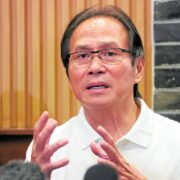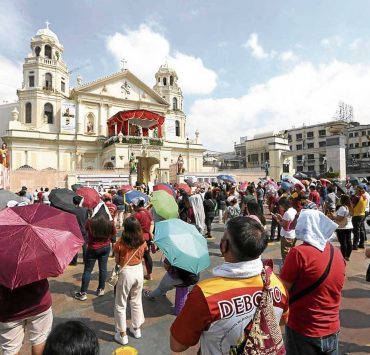The congressional gymnastics has begun

The budget season is on. It’s that time of the year when our legislators hunker down to digest, dissect, and reappropriate items in the proposed national budget, which is submitted to Congress by the President following the latter’s State of the Nation Address or within 30 days of the opening of the regular session of Congress.
The proposed national budget for the entire government is contained in the Budget of Expenditures and Sources of Financing supported by the voluminous National Expenditure Program (NEP). The President’s budget message that is attached to these documents outlines the policy goals and priorities of his administration. The annual budget bill is both the most contentious and most important pieces of legislation, as Congress has the power of the purse. Once the budget hearings for departments and floor deliberations, conducted separately by the House of Representatives and the Senate, conclude, the budget bill will be transformed into a different entity.
At the end of the day, and hopefully before the adjournment of Congress during the Christmas break, both chambers would have reconciled their differences over the NEP and adopted—in separate plenary sessions—a newly minted General Appropriations Act (GAA). Sans such a rosy prognosis, a select few (senators and representatives equally represented) must attend a bicameral conference to smooth out their differences and come up with a common version.

In the 2000s, when I started covering the Senate and the House for the Inquirer, the long budget season, which begins in August, allowed lawmakers to flex their legislative muscles regardless of political or party affiliations. Everyone had a stake in the final form of the budget.
But it’s the opposition led by the fiercest critics of the sitting President, including the left-leaning party list bloc in the House, that dutifully held the purse strings besides fiscalizing.
The majority could adjust budgetary allocations here and there. But except for several times during the Arroyo administration when budgetary wranglings were so intense that it paralyzed Congress, necessitating a reenacted budget for the first months of the following year, the House majority would do its job beautifully—rubber-stamp the budget. Everybody—except for the vocal opposition—was happy at the end of the day.
Pork barrel
The most safeguarded allocation in the budget, from the point of view of lawmakers, is their pork barrel, also known as the Priority Development Assistance Fund (PDAF). This is where lawmakers are in their element, and where the mental, verbal, and linguistic gymnastics happen.
Absentee lawmakers appear out of nowhere, buoyed by a renewed enthusiasm to fulfill their lawmaking duties over “constituency work,” the congressional jargon for members spending more time in their districts blamed for the perennial lack of quorum in the lower, but bigger, house. To resolve the conundrum, the house majority would just suspend sessions instead of adjourning to continue conducting business the following session days, working under the “myth” of having a quorum. The House minority consistently questions this practice, but mostly unsuccessfully.
But expect a full house during plenary debates and approval of the budgets of departments and agencies that are known sources of patronage funds for their constituents—public works (infrastructure projects), health (medical assistance), and education (scholarships but mainly school buildings). Lately, the Technical Education and Skills Development Authority and the Department of Labor and Employment, through its Tulong Panghanapbuhay sa Ating Disadvantaged/Displaced Workers or Tupad program, which was allocated P28.8 billion for 2024, have been included in this coveted group of departments that serve as caja de hierro (safe or storage box) for congressional insertions which are on top of their PDAF allocations.
During the Estrada and Arroyo administrations, PDAF used to be at least P70 million per House member, which could be divided into P40 million for “hard” (infrastructure projects) and P30 million for “soft” (medical assistance, scholarships). Each senator would get—at least—P200 million. The amount has since gone through the roof in the Duterte administration, with a handful of favored congressmen and districts receiving P7-15 billion each. Not to be outdone, some senators reportedly inserted billions of pesos of appropriations in several departments that were funneled to their favored projects and provinces.
So why not just pass the budget in toto? The administration would be thrilled by that. But some gains are achieved by the electorate through our representatives, who, however few, have taken to heart their sworn duty. For one, lawmakers retain the power to amend items in the NEP, although these changes may be minor when compared to the vast amount of appropriations included in the GAA.
For comments: mubac@inquirer.com.ph


















